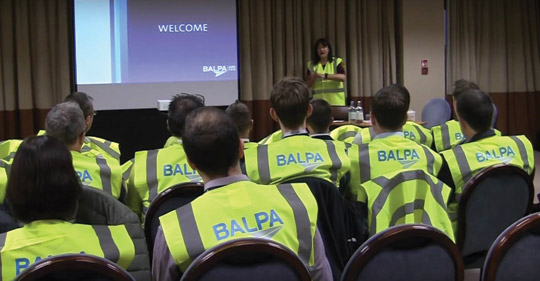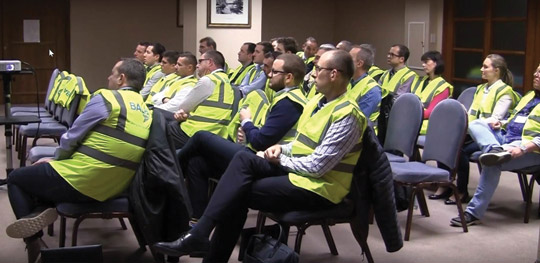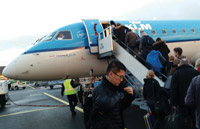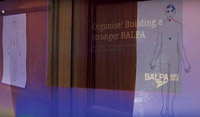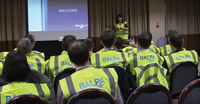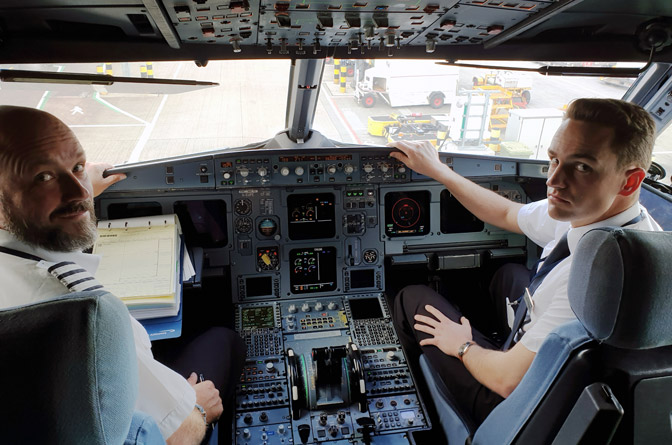
Dave Smith explains how the pilots’ union BALPA used bodymapping to demonstrate what about the job was a real pain in the neck.
Unfortunately, when faced with ill-health amongst their workforce, rather than trying to tackle the hazard that is causing the long-term health problems, many bosses choose to discipline the workers for being sick and even dismiss them due to ‘capability’.
Employers often deny that work has any negative affect upon their workers’ health, instead claiming that everyone’s body suffers wear and tear as we get older. If that were true, health problems would appear in a random distribution across the entire population. Instead, particular diseases and health problems occur in clusters, commonly related to the kind of job people do.
Carpenters regularly complain of a condition known as frozen shoulder, where shoulder pain and stiffness can be debilitating. It is associated with the increased use of cordless drills and is invariably linked to the side of the body which uses the power tools. Workers employed in recycling heavy metals suffer higher incidences of rare cancers, those who work in dusty environments commonly develop lung problems, while carpal tunnel syndrome has long been linked to repetitive tasks such as typing or using heavy, vibrating tools. Put simply, what job you do, very often determines where you ache.
Just as workers know what is likely to cause an accident, they are often best placed to identify what makes them sick. The closeness of union safety reps to the workers they represent gives them the potential to harness their collective knowledge in order to identify and deal with the causes of ill-health.
Fortunately, reps don’t need to be mind readers, as unions have developed a technique called ‘bodymapping’ that is easy for any safety rep to use (Hazards 134). By safety reps talking to groups of small workers who all do the same job, it is relatively easy to identify the common health issues that affect particular occupations. By marking up ‘where it hurts’ on printed sketches of a human body it is possible to ‘map’ everything from stress to back pain.
When multiple body maps are completed for different job roles, it becomes obvious that particular long-term health problems are inextricably linked to the jobs people do; they are occupational diseases. Any employer that genuinely wants to improve health and safety of their staff should sit up and take notice.
When the airline pilots’ union BALPA carried out body mapping exercises with their own members, neck and shoulder pain was a commonly identified problem that was highlighted in bright marker pens on the body maps. What was striking was the direct correlation between rank and the side of neck that was painful. Captains suffered pain on one side of the neck and First Officers in the other. What was the cause?
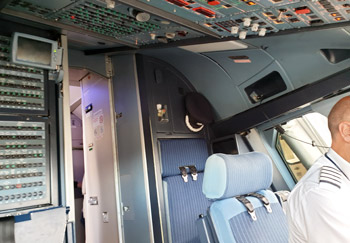
Aviation rules changed after 9/11 and flight deck doors are now locked during flights, only opened once the pilot has looked at a video screen to check who is asking to enter the cockpit. The video screens are placed by the door, which is behind the pilots, forcing them to twist in their seats whenever they check the video screen.
As Captains always sit in the left-hand seat and the First Officer in the right seat, they twist in different directions, resulting in the pain occurring in different sides of the body.
The evidence is compelling and obvious – and importantly doesn’t require the safety reps to have any kind of specialist medical expertise. In some airlines, BALPA has already negotiated successfully for the screens to be moved to a position in front of the pilots, removing the hazard causing the health problem altogether.
Safety reps are legally entitled to paid time off to carry out regular inspections of the workplace, to proactively identify health and safety issues. There is absolutely no reason why bodymapping cannot be carried out as a form of inspection. If you’ve never done a bodymapping exercise with the workers you represent, give it a try.
| RESOURCES | |
| Hazards webpages | |
| • | Organising |
| • | DIY research – including bodymapping, interactive hazards detective tool, get mapping guide, risk mapping and world mapping guides. |
| UK union guides | |
| • | Health and safety and organising – A guide for reps, TUC. www.tuc.org.uk/HandSandOrganising |
| • | CSP bodymapping guide. |
| • | PCS bodymapping guide. |
| • | Prospect body and workplace mapping factcard. |
| • | TSSA bodymapping guide and chart. |
| • | UNISON health and safety organising guide. |
| • | Unite working women negotiators’ guide. |
| • | Usdaw bodymapping, tell us where it hurts guide and charting back pain guide |
| Other resources | |
| • | ILO guide to ‘barefoot research’ – also available on the TUC website. |
| • | HSE bodymapping tool. |
| • | OHS Rep (Australia) bodymapping guide. |
| • | ICTU (Ireland) workplace and bodymapping guide. |
 |
PLANE TRUTH Regulations introduced to address the risk of plane hijacks mean pilots are now locked on the flight deck for the duration of the flight. Bodymapping organised by UK pilots’ union BALPA revealed this safety measure turned out to be a real pain in the neck for flight crews.
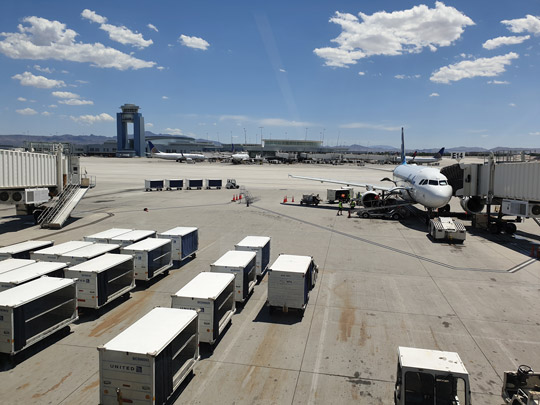 |
DRIVING SAFETY The job hazards facing pilots don’t end when the aircraft lands. Airports are highly complex and busy environments, with extreme pressure to get a fast turn around to maximise profits, creating transport, maintenance and other risks. Toxic fume incidents in aircraft has now been identified as a potentially fatal addition to the risks, alongside the potential cancer and other risks from disrupted sleep patterns and light exposures.
 |
THE POINT Clusters of dots on a body map quickly revealed where the job is causing health problems for pilots during this BALPA organised mapping exercise. Bodymapping was introduced to the UK and further afield by Hazards magazine and has become a key trade union health and safety tool.
 |
FLIGHT PATH Knowing what is hurting you is only a first step. Organising as a union for improvements is the real objective. Using lessons learned from a union bodymapping exercise, BALPA negotiated modifications on the flight decks of some planes to reduce twisting and the related neck strain in Captains and First Officers.
|
|
ONE OUTFIT Union safety and organising sessions allow pilots to exchange notes on health and safety problems identified and difficulties and successes in negotiating improvements.
Pilot Study
Being a safety rep isn’t just about helping to prevent accidents, it’s also about trying to make a difference in relation to workers’ occupational health. Dave Smith explains how the pilots’ union BALPA used bodymapping to demonstrate what about the job was a real pain in the neck.
Resources
Useful mapping tools from unions and campaigns.
Images
Click on images for larger versions

